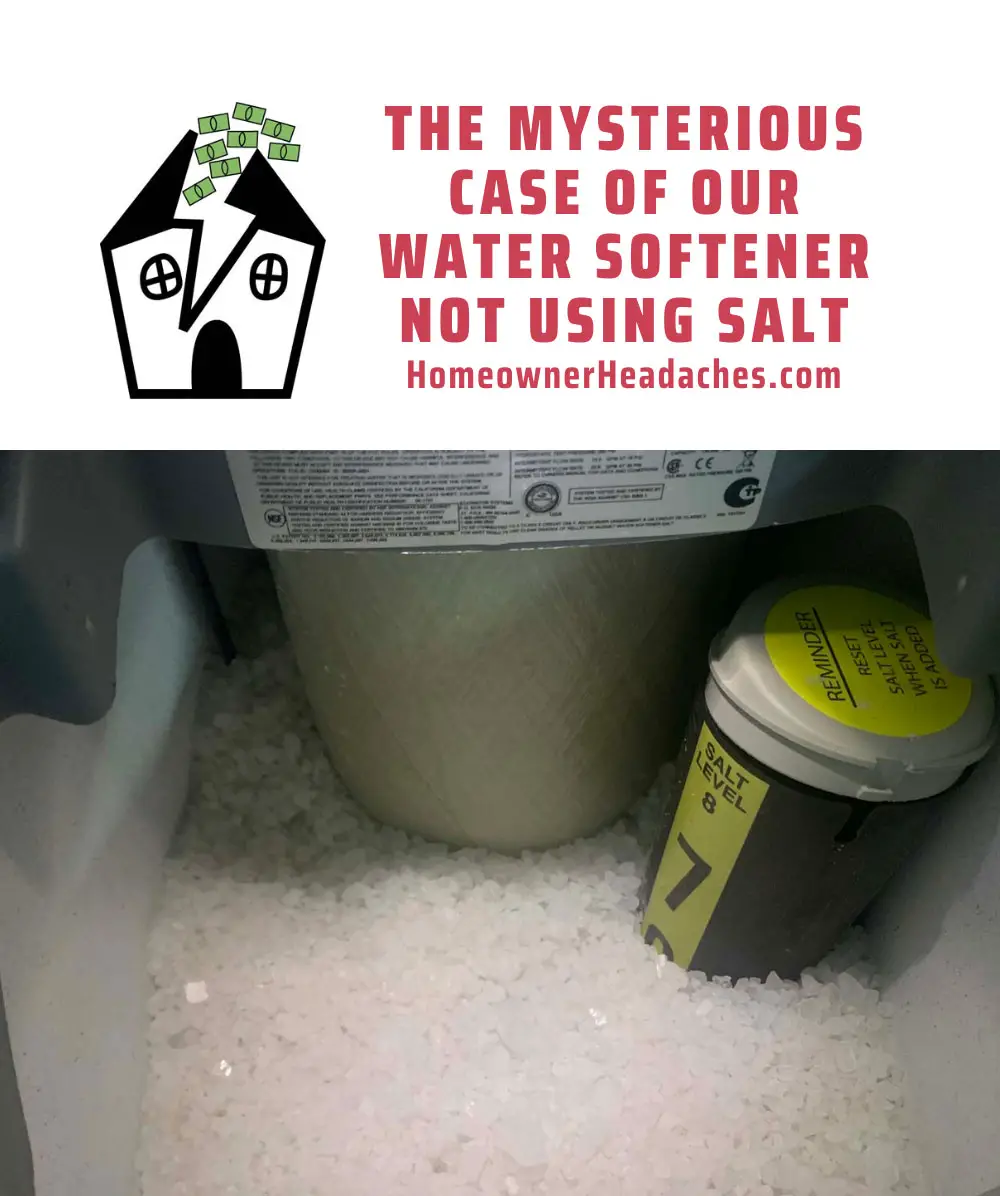In the late Summer and early Fall of 2022, our aging water softener managed to run up our water bill. It set forth a chain of events that ultimately resulted in our water softener system getting refurbished (or “resurfaced”). However, barely after only 9 months of use, it seemed like our pesky water softener still wasn’t working right. In this article, we’ll chronicle our efforts to troubleshoot a water softener that was apparently not using salt, and how we ultimately got it resolved.
Why Bother With A Water Softener?
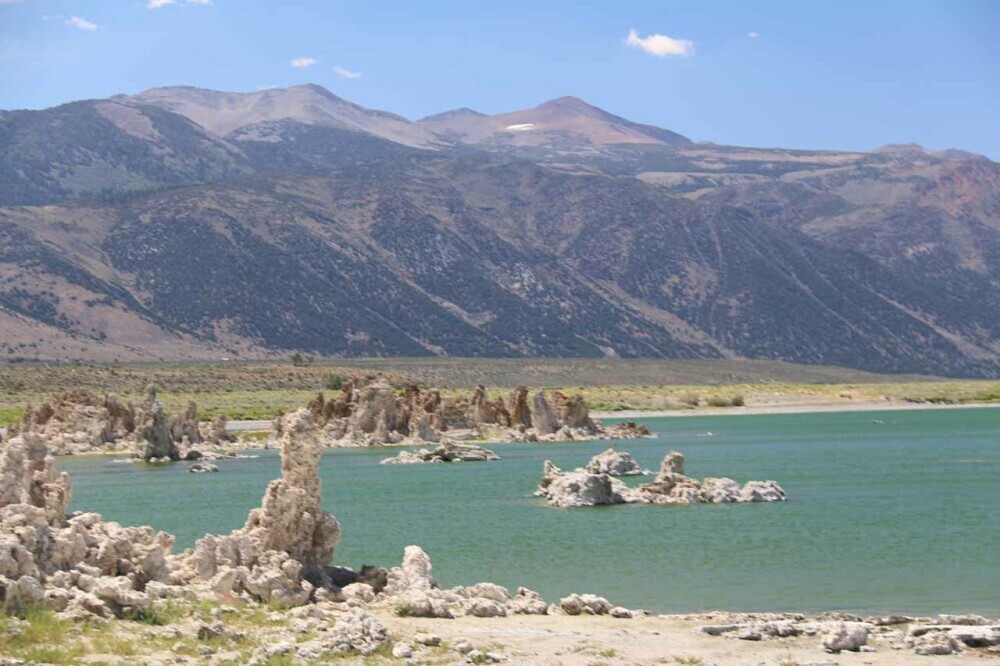
The main benefit of having soft water as opposed to hard water is that the municipal water supply (where we get our running water from) tends to contain “hard” minerals such as magnesium and calcium (as well as other compounds to a lesser degree) that result in build-up within our pipes, appliances, and even our skin and hair. Both magnesium and calcium naturally make their way into the water supply from rocks in Nature that the water comes into contact with.
The thinking with having soft water run through our pipes and appliances is that they should allow them to last longer and thus save us money in the long term. We’ve definitely noticed a difference from when we lived with hard water versus now where we have soft water.
Some water softeners (such as the one we have) can also reduce the concentration of chlorine in the water, but I understand that this is certainly not common. In fact, some systems require the purchase of a separate filter to remove chlorine. Ours just so happened to do both water softening and chlorine reduction in one unit.
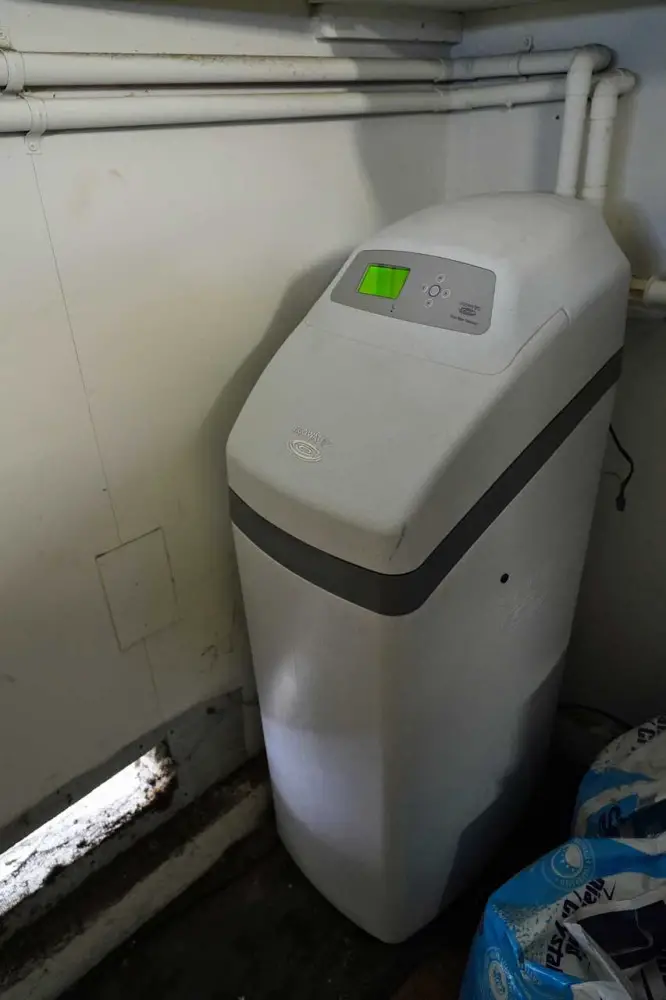
As far as the chlorine was concerned, after speaking with someone who works at the LA DWP (Los Angeles Department of Water and Power), I learned that disinfectants like chlorine (as well as chloramine or other disinfectants) are a necessary evil to be compliant with drinking water regulations. There’s a fine balancing act between controlling the growth of harmful microorganisms while at the same time trying to limit the introduction of chemicals which can act as poisons when their concentrations are too high. In fact, even water that has been stored for too long can “go bad” where the water company may have to let the excess or non-compliant water drain back to the ocean.
To give you an idea of how some of the stuff in our water supply may be safe for drinking but harmful in other respects, let me offer you a personal example I had with chlorine. You see, I remembered taking swimming lessons to get our preschool-aged daughter into swimming. However, I noticed that I was losing hair at an alarming rate during the course of these lessons. Fortunately, this hair loss episode stopped after the swimming lessons were over, which made me suspect that the chlorine in the swimming pool was the culprit.
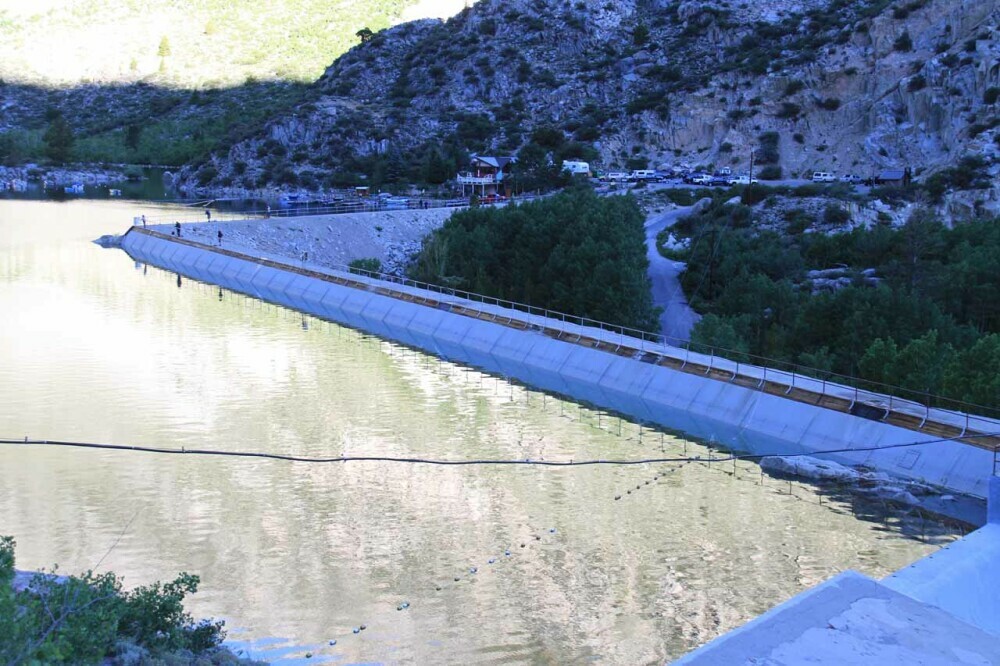
I guess this makes sense when you consider how something as effective at fending off microbial growth in the drinking water as chlorine may also have undesirable effects on the “beneficial bacteria” that our bodies depend upon to function. Perhaps the chlorine impaired something in my body, which might have resulted in my hair loss episode.
Of course, other hard minerals or compounds found in the municipal water supply can leave behind hard calcium deposits on our faucets, pipes, and drains, which can compromise their functionality over time. These deposits can harbor microbes, cause clogs, or even weaken joints. Of course, there’s a lot more chemicals in the water than what’s mentioned here (e.g. there’s known to be medical waste from improper disposal of them into our supply), but you get the idea.
How Does Our Water Softener Work?
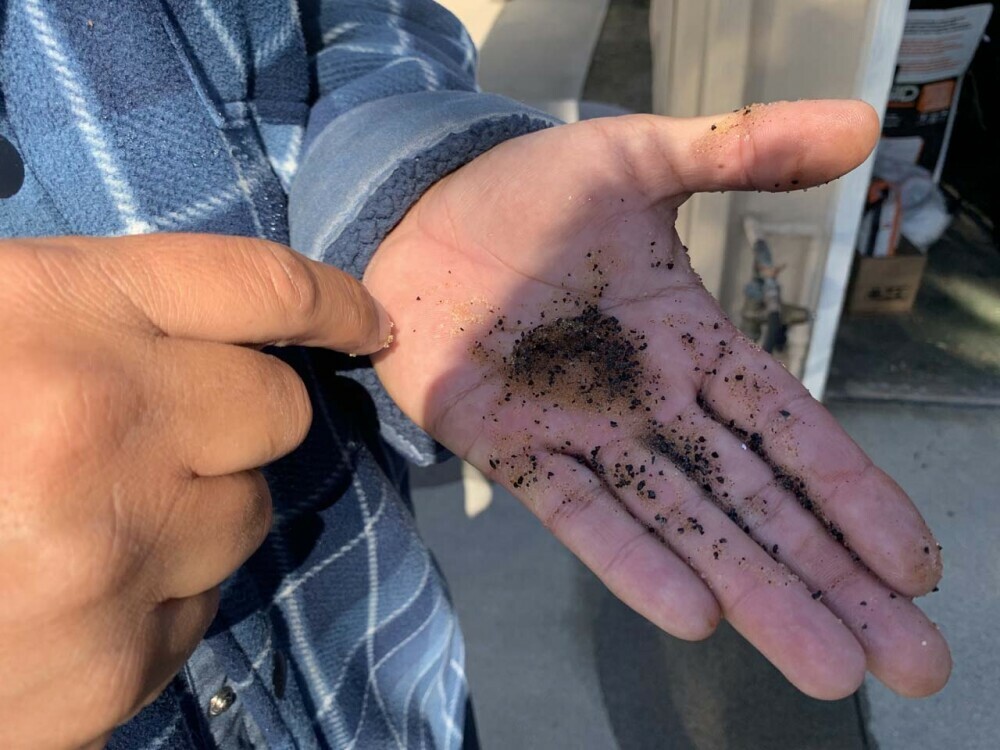
In order to better understand what’s going on with our water softener, we need to understand how it works.
In our case, we procured a water softener system called the Ecowater ERR 3500 when we first moved into our home in January 2014. We perceived Ecowater Systems, an affiliate of Costco Wholesale, to be a reputable company with staying power so there would be someone we could talk to if we had issues.
As mentioned earlier, our particular water softener system did things that a typical water softener system would do as far as having a brine tank (which is where we add salt into it), a resin tank (which was a column that was within the resin tank), a control panel, and some pipes going in and out of the unit. However, it’s also capable of reducing the chlorine concentrations in our water.
Furthermore, it’s worth noting that there are other systems out there that use potassium as well as other elements or compounds (besides salt) that ionize when they come in contact with water.
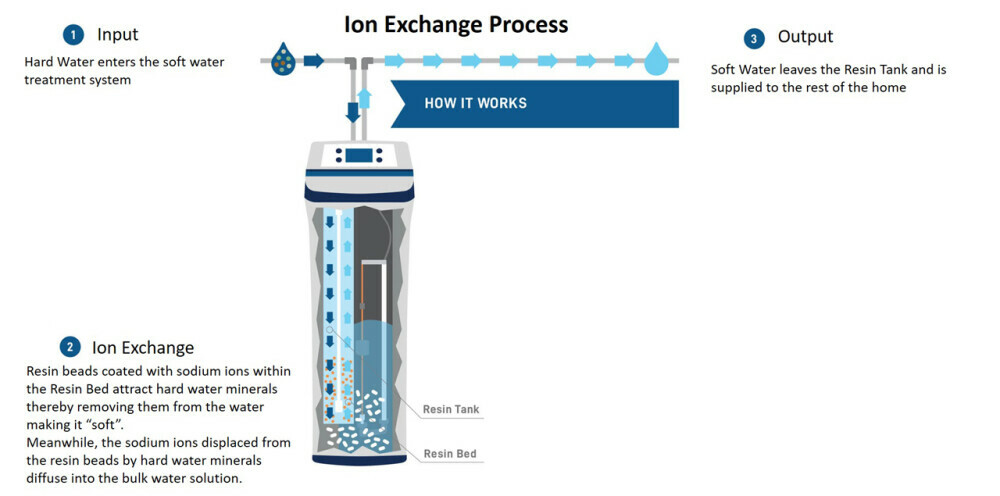
Anyways, the untreated “hard water” goes to the water softener, where it reacts with sodium-attached resin beads within the system’s tank. The resin beads bond with the hard water minerals thereby removing them from the water resulting in “soft water”. Meanwhile, the sodium ions that were once attached to the resin beads are now displaced and in the bulk solution. The “soft water” gets supplied to the rest of the home while the bulk solution remains in the resin tank. Due to the exchange of sodium and hard water ions, this process is referred to as ion exchange though it has also been called demineralization or water softening.
Contrary to popular belief, the salt’s job is to essentially “clean” the resin beads (not “soften the water”) by taking the place of the hard minerals bound to the resin beads. This allows the resin beads to be “revived” so it can continue to treat the next batch of hard water. Meanwhile, the unbound hard minerals gets flushed into the drain with the resultant bulk solution. What’s left at the end of this cleansing process are resin beads coated with sodium ions so it’s ready for another round of ion exchange when hard water is introduced. Due to the rejuvenation of the resin beads, this part of the process is also called the regeneration cycle.
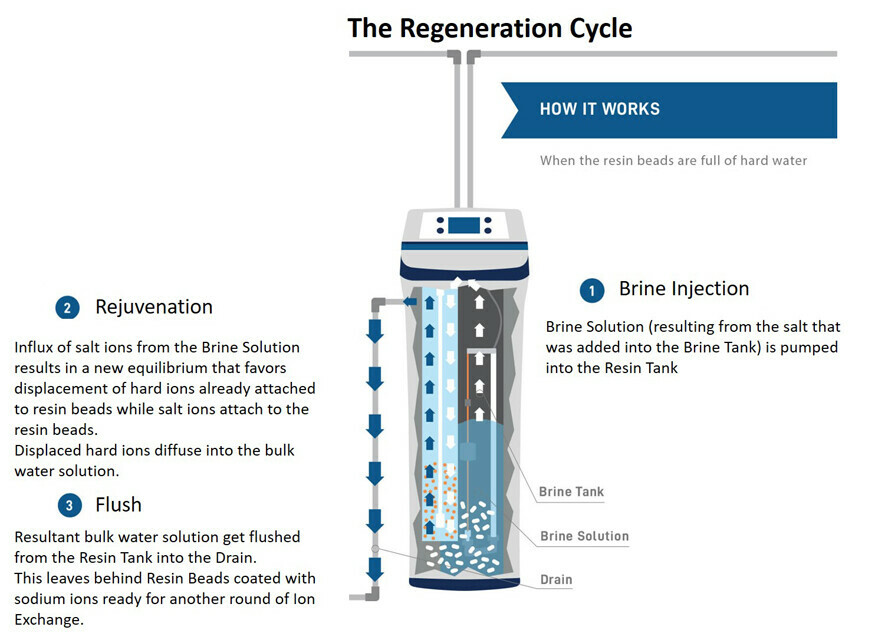
The “regeneration cycle” is typically scheduled to occur for a couple of hours while you’re asleep late at night when no one is likely to be using the water. After all, if the intent is to exclusively use soft water in the home, then you wouldn’t want to be using water while the softener is busy maintaining itself during a regenerative cycle.
Although the description I gave above gives you the general gist of how water softeners work, understanding the actual chemistry behind it is a bit more involved. Thus, I’d say this superficial view of the ion exchange and regeneration cycle is pretty much all there is to know about how water softeners work. So why did our water softener have problems, and how did we know we had a problem in the first place? We’ll address that next.
How Did We Know Our Water Softener Wasn’t Functioning Properly?

For the few months since we got back our water softener after “re-surfacing” the resin bed, our unit seemed to be working fine at first. However, it didn’t take long before we started to notice clues that hinted at the water softener not functioning properly.
The first thing we noticed was that the water still felt “sticky” instead of “soapy” while showering. Granted, this wasn’t very quantifiable evidence, but it certainly made us wonder if our problems had been fixed to begin with or whether there was a different problem with our water softener.
We even noticed some cloudiness on our shower doors as well as some deposits on our faucets and shower heads, which definitely made us suspect even more that something was wrong.

Then, over the period of the next 6 months, I looked at our salt levels inside the soft water system’s brine tank, and I noticed that it stubbornly stayed at 7 out of 8. We even frequently added ResCare, which was a recommended course of action by one of the techs that re-surfaced our Ecowaters system, but that didn’t seem to work either.
Was our water softener even using salt? Was there some kind of salt bridge forming (perhaps from putting in too much salt into the brine tank)?
Since it wasn’t that long ago that our water softener had been serviced, we needed to take the initiative and get to the root cause of this problem before we become out-of-sight, out-of-mind to Ecowaters. If you’ve seen our other homeowner headaches throughout this website, you know how important it is to be proactive about these things and not let problems get dramatically worse.
Thus, we called Ecowaters and had a service tech come out to investigate. It took a couple of weeks before we had one of the servicemen show up. Both Julie and I were there to see what he did, and we were very involved in asking questions, which he gladly answered for us. So let’s get into what we learned from his investigation.
Getting To The Root Cause Of The Issue
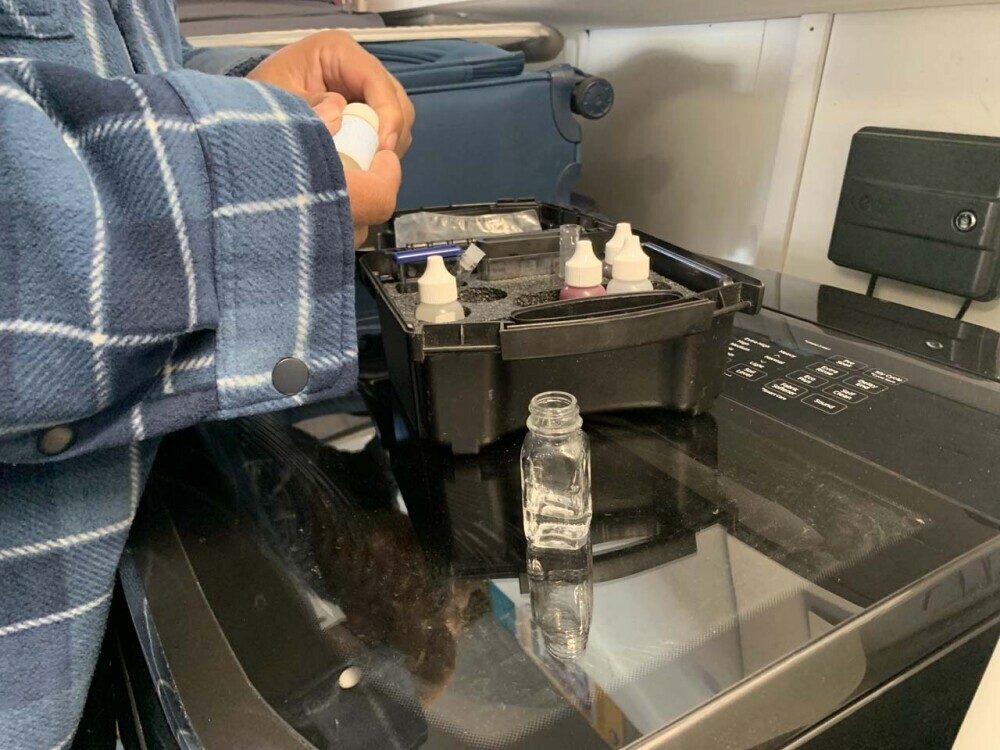
The first thing that the service tech did when he showed up to our home was to sample the water at both the input to the water softener (i.e. the municipal supply) and the output from the water softener (i.e. our faucets in the home; we used our kitchen sink in this case). The tech did mention that we could easily do the same thing on our own with a water test kit that we could buy at a home improvement store or even Amazon.
In the case of what our serviceperson used, he went with a kit that consisted of vials accompanied with a dropper as opposed to a strip kit (where you’d look at the color on a strip and compare it to some template). With the samples, he counted how many times he dropped the agent into the water sample before he noticed a particular change in color in the water sample. Depending on the color and how many drops were made to yield that result, we can determine the hardness of the water.
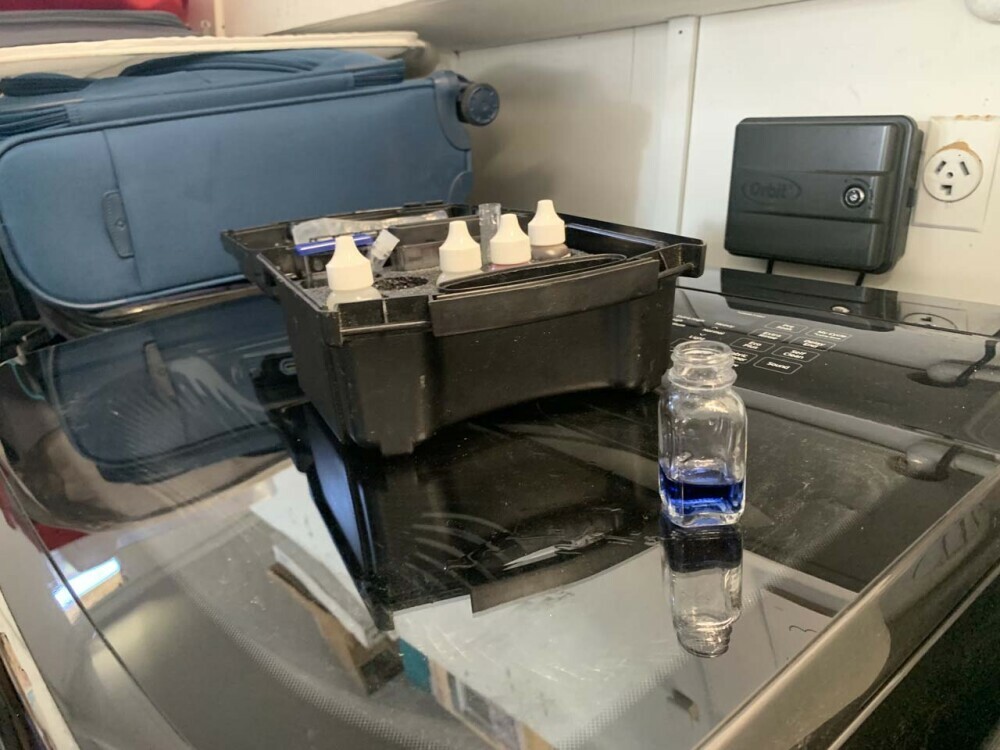
Based on the measurements, it turned out that our municipal supply had a hardness of 13 grains per gallon. He did say that he has seen some municipal supplies get up into the 20s, which I’d imagine is related to a combination of water scarcity and how well managed water supplies, which varies across different jurisdictions.
However, our water softener output had a hardness of 5 grains per gallon, which was unusually high. The tech said that the water softener should yield water with a softness of 0 to 2 grains per gallon. So that was empirical evidence that something was definitely not right, and it wasn’t just hearsay.
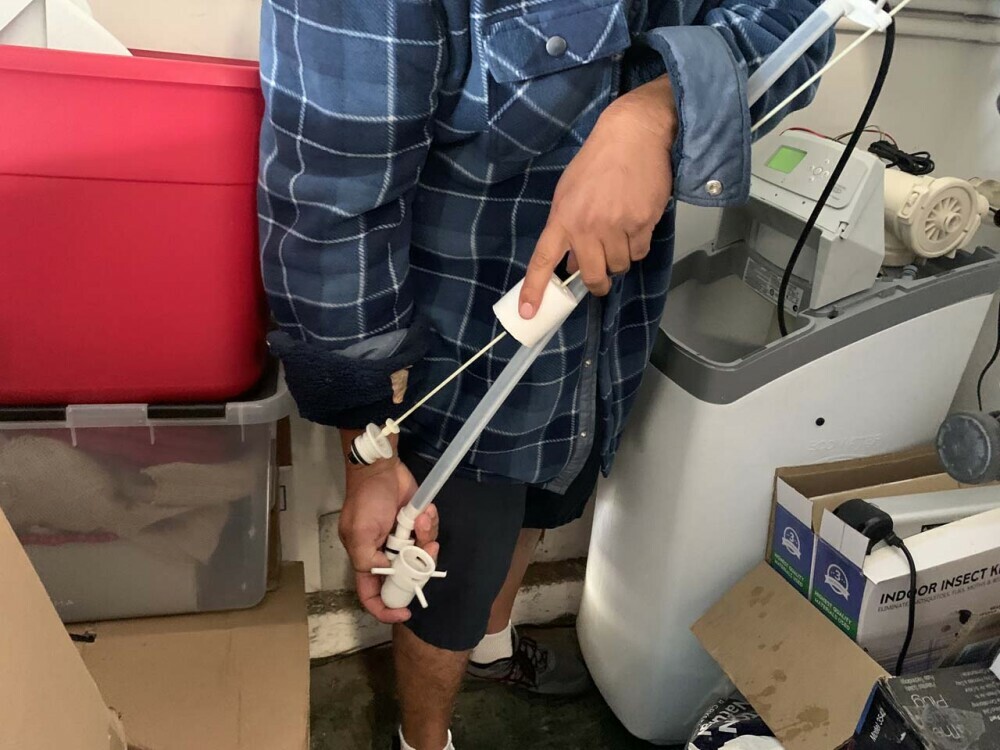
Next, the service person took apart the unit and started to make sure the components were working properly. He checked the suction that would bring salt-ionized water from the brine tank, checked the regeneration cycle history, checked the salt we were using (which was Morton solar salt), and even checked for the presence and health of the resin beads.
After about an hour or so, the service person determined that the unit appeared to be working fine, but the water’s hardness at its output bothered him. Thus, we decided to let him take our unit back to the shop for a more thorough investigation. As a result, we had to go without soft water for another couple of weeks.
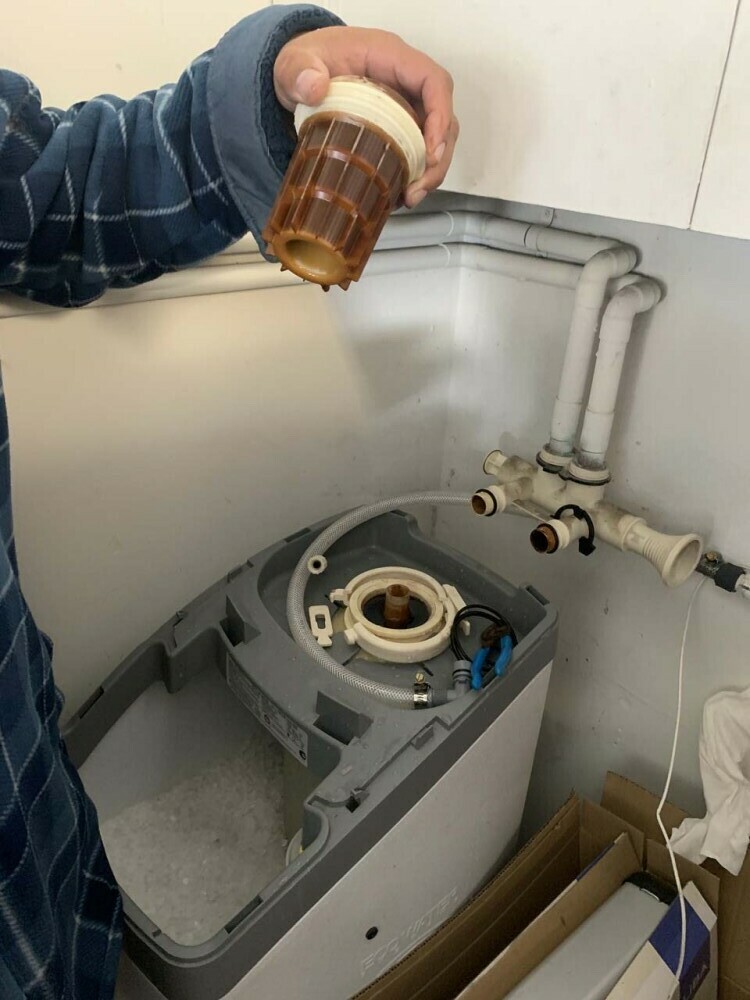
During that time, there was a very noticeable difference between not having the water softener and having it. For during its absence, there was a very strong smell of chlorine as well as stickiness to the water when showering. There were even some stains left behind our dishes after our dishwasher had been run.
By the way, the serviceman dispelled my hypothesis about there being a salt bridge in the tank (thinking that perhaps we had overfilled the brine tank with too much salt). He said that salt bridges are usually from other compounds or low quality salt, but the solar salt we were using shouldn’t be causing them. It might also explain why the do-it-yourself solution of trying to break the supposed salt bridge within the brine tank with a broom handle wasn’t working for me.
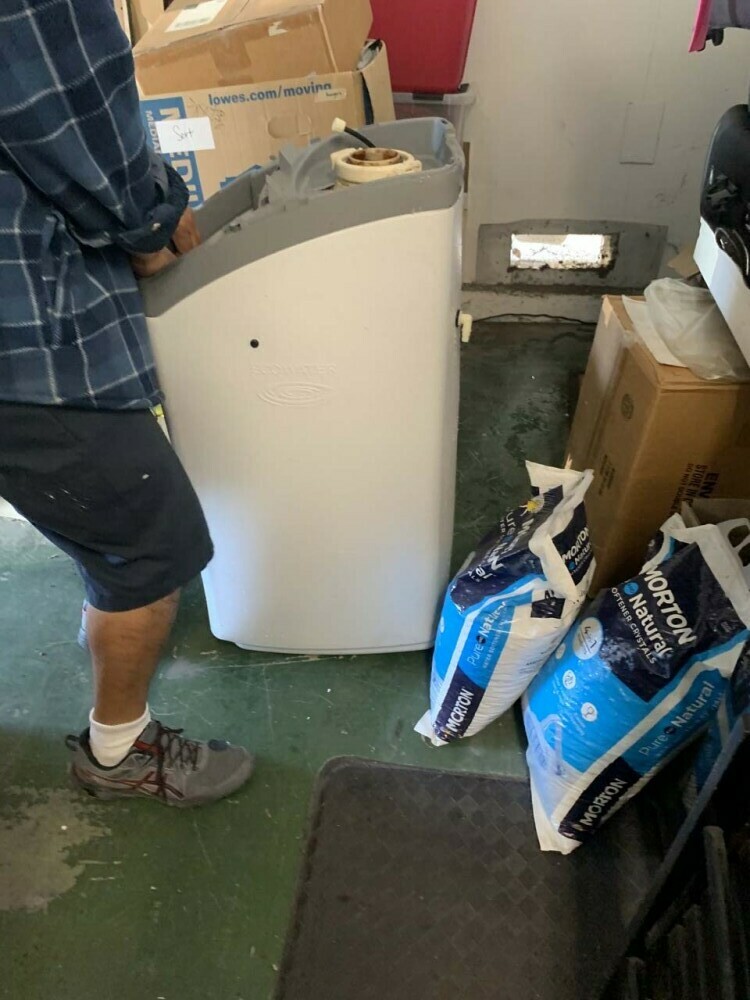
After we got back our soft water unit, the service person concluded that we must have gotten faulty resin beads during our re-surfacing job. So he wound up resurfacing our water softener again, but this time with a fresh new batch of resin beads.
So far within the first month of using the water softener, we could definitely tell the difference in performance. The jury is still out on whether it will continue to perform or if we have a longer term problem, but at least we know what to look for going forward…
Conclusion: Lessons from Our Water Softener’s Troubleshooting Saga
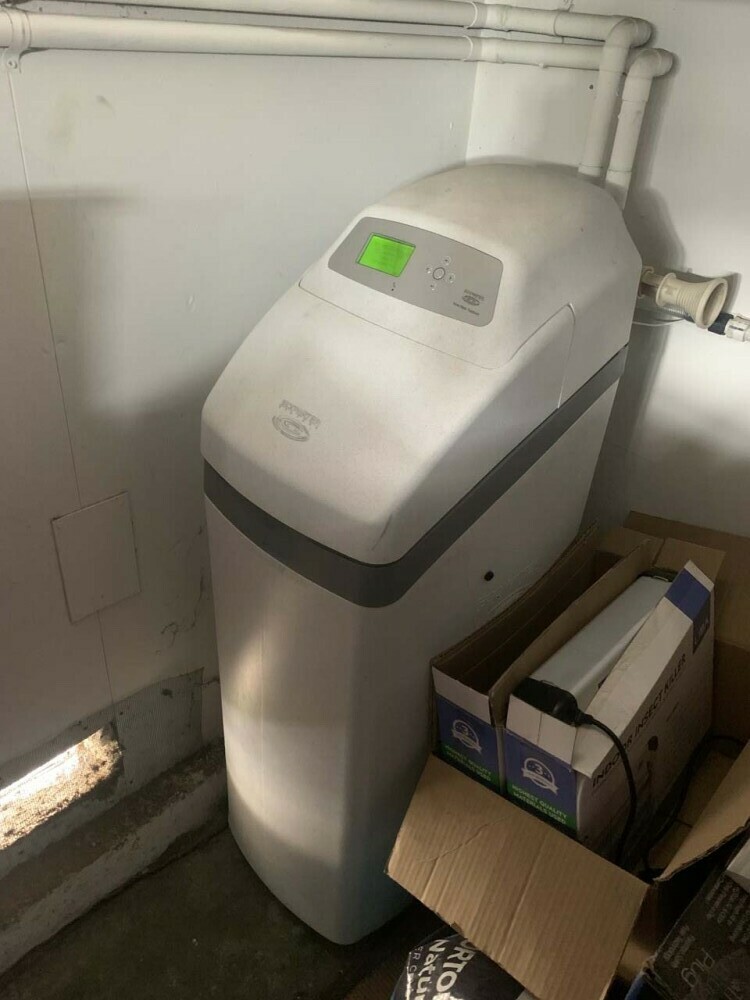
With all the trouble that our water softener has been causing us (from runaway water bills to worrying about the life of our system), one might wonder if it’s even worth having a water softener in the first place.
All I can say about the matter is that a water softener is just like any other appliance or system you have in the home in that it needs care and attentiveness. For example, we can put in some ResCare to help the longevity of the resin beads (something we didn’t do at all prior to our system failing on us the first time in late 2022).
Indeed, all such contraptions are made by people, and there are inevitably going to be imperfections, mistakes, and wear-and-tear. Nothing is built to last forever, especially if businesses are rewarded economically for planned obsolescence as well as repeat service calls.
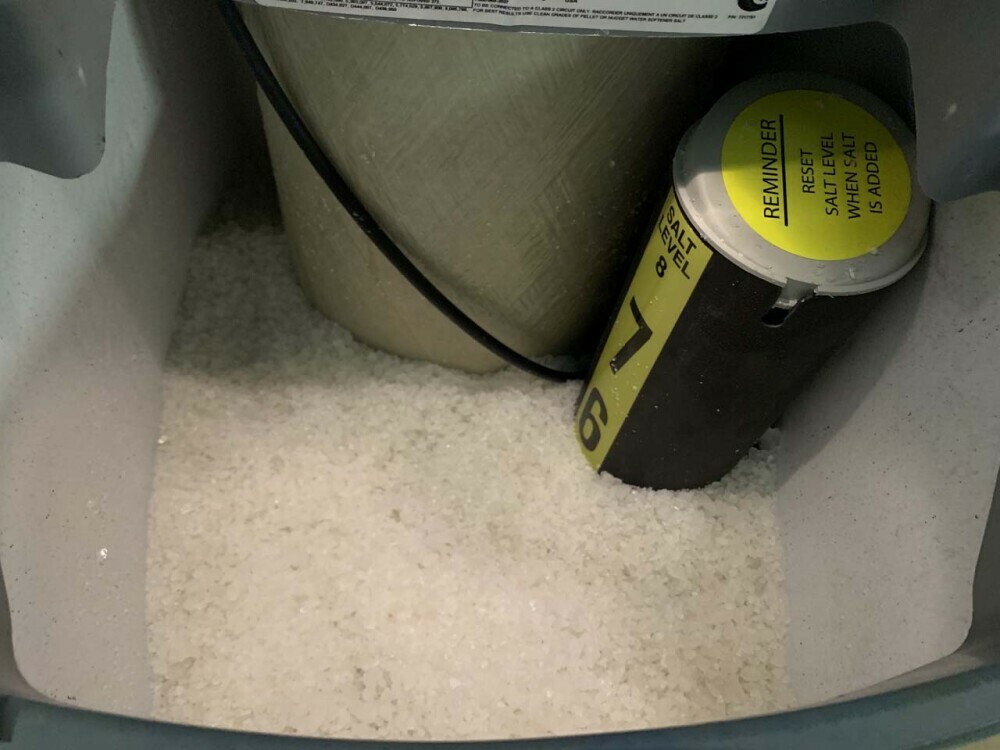
So faced with this kind of environment that’s beyond your control, it’s really up to you to do what you can to pay careful attention and be proactive about responding quickly to problems that inevitably arise.
Indeed, there’s only so many things that are within your control, and how you react to adversity (which everyone has to go through in life) is one of those things.
Most importantly, like in life, you never stop learning. You just never know when you have to put your newfound knowledge to use, like what we’re doing with this particular homeowner headache!

